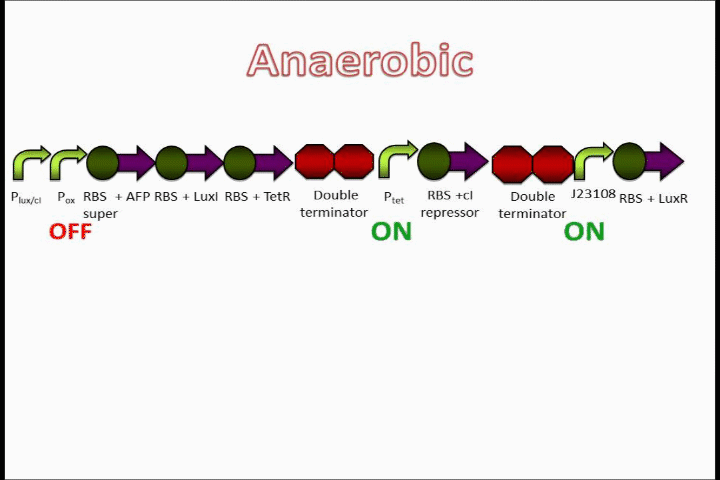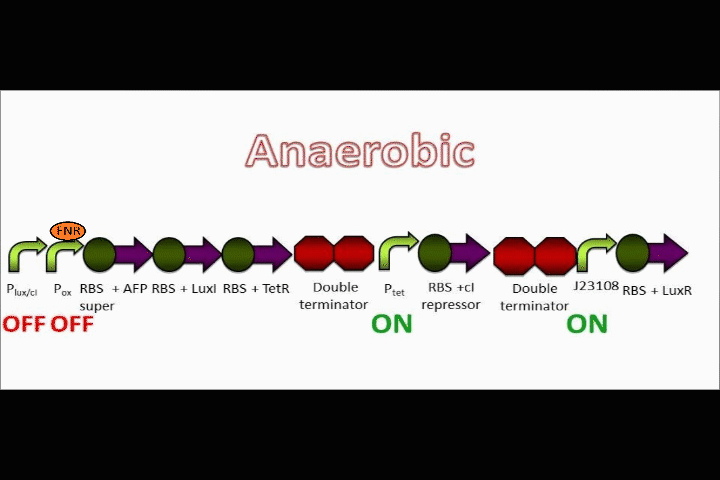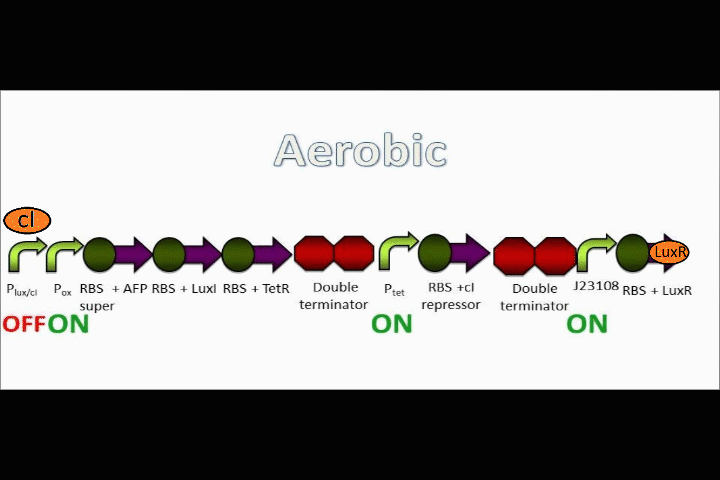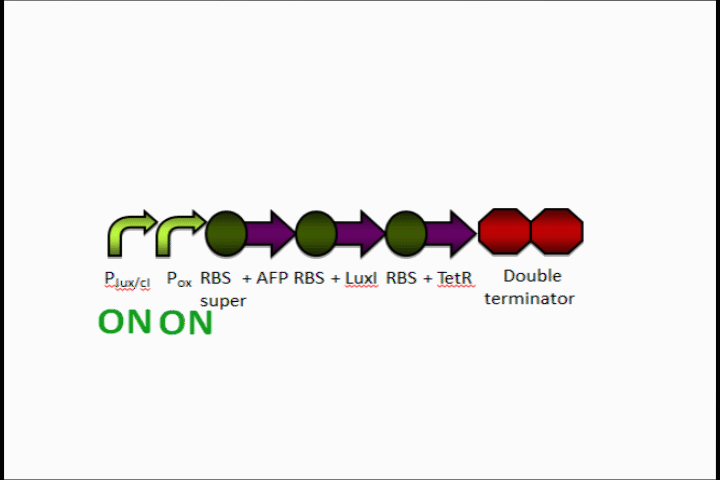Team:Penn State/Project
From 2010.igem.org
(→cI mechanism) |
(→FNR breaks apart in oxygen) |
||
| Line 122: | Line 122: | ||
[[Image:CImovie.gif|cI mechanism]] | [[Image:CImovie.gif|cI mechanism]] | ||
| - | + | FNR breaks apart in oxygen | |
| + | |||
| + | |||
[[Image:FNRmovie.gif|FNR breaks apart in Oxygen]] | [[Image:FNRmovie.gif|FNR breaks apart in Oxygen]] | ||
Revision as of 03:48, 27 October 2010
| Home | Team | Official Team Profile | Project | Parts Submitted to the Registry | Modeling | Notebook | Human Practices | Safety | Sponsors |
|---|
Contents |
Overall project
The Penn State Team will be researching and experimenting two different ideas. The first area of study will be creating an oxygen-sensing promoter. This will be done through researching the way that FNR and arcA regulate aerobic/anaerobic respiration in E. coli; engineering applications will be applied to these processes. The second topic we are working on is Bacterial Fireworks, an incorporation of quorum sensing, pigments, and cell lysis. Our goal is to assemble the necessary parts to display the spreading of color as the cells lyse. The team would like to incorporate both aspects of the project to create a bacterial fireworks display that is triggered by a lack of oxygen inside of an agar sphere.
A reliable modular lysis mechanism through quorum sensing could be used in many different fields. As engineered microorganisms are becoming more widely considered for use in the open environment, concerns are growing about possible detrimental effects these microbes could have on ecosystems if they were ever to grow and multiply past expectations. A quorum-based lysis "safety" mechanism would only require one cell to receive a predetermined signal in order to eliminate the entire rogue population, should it escape the area of its intended use.
Project Details
Genetic Circuit
The Penn State iGEM team began work and research in mid May. After learning lab techniques from the grad students, we began researching possible topics. We decided to create a cell lysis device.
Initially, we transformed Lux Promoters, Constitutive Promoters, LuxI + RBS, LuxR + RBS, Lambda Phage lysis devices, Terminators, LacI, LuxR, pLac, CI, RBS, Pigments, FP, LacI + RBS, and CI + RBS.
| Lux Promoters | Lux Promoters | Constitutive Promoters | LuxI + RBS | LuxR + RBS | Lambda Phage Lysis Device | Terminator |
|---|---|---|---|---|---|---|
| K091107 | R0061 | J23108 | C0261 | J37033 | K112022 | B0010 |
| K091146 | R0063 | J23116 | S01414 | K112808 | B1002 | |
| K145150 | R1062 | J23100 | B1006 |
| LuxR | LacI | pLac | cI | RBS | Pigment | FP | LacI + RBS | cI + RBS |
|---|---|---|---|---|---|---|---|---|
| C0062 | C0012 | R0010 | C0051 | B0033 | K274100 | RFP + RBS | J24679 | K081007 |
| B0034 | K274004 | P0451 |
Here is an overview of our genetic circuit. Below, we will take a look at the function of each individual part in detail.
Initially, our genetic circuit cI mechanism
FNR breaks apart in oxygen
 "
"




